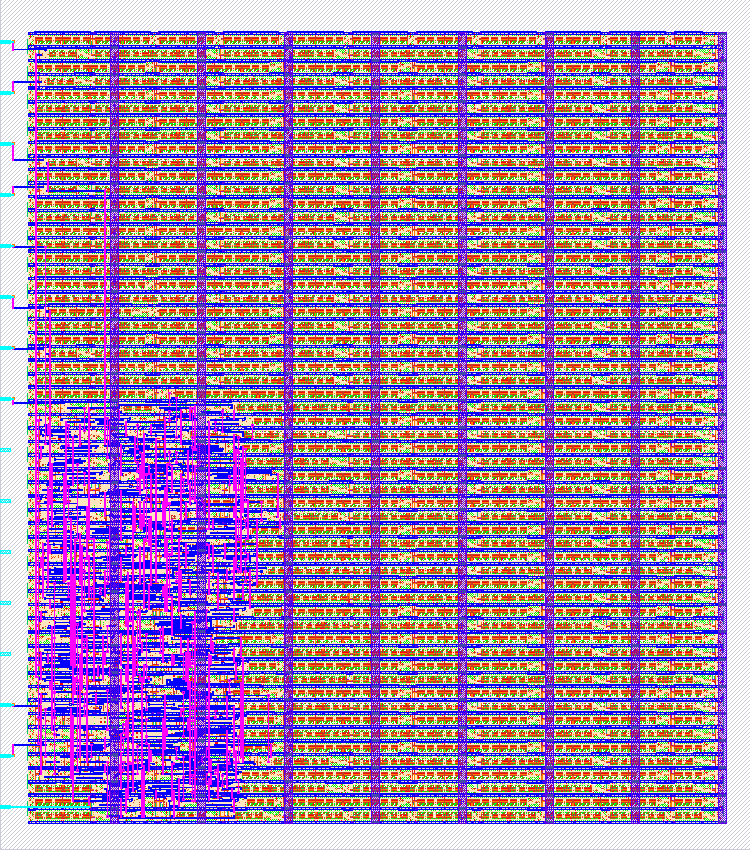26 tiny logic analyzer
26 : tiny logic analyzer

- Author: yubex
- Description: The design samples one data input and shows the current state and edge events using the 7 segment display.
- GitHub repository
- Open in 3D viewer
- Clock: 12500 Hz
How it works
The samples of the data input pin are shifted into a shift register first. After that the 2 most significant bits of the shift register are used to detect the current signal state (high, low) and the edge events (rising edge, falling edge). There are 4 different states/events displayed on the 7 segment display.
| state/event | segments on |
|---|---|
| high | a |
| low | d |
| rising edge | e and f |
| falling edge | b and c |
The edge events duration is extended by counters, so the events can actually be seen by the human eye.
How to test
You can test by using the dip switch connected to io_in[2] as data input. I plan to connect a wire to the pin on the PCB by PMOD connector or custom soldering to be able to have a "measurement probe". ;-)
External hardware
no external HW required
IO
| # | Input | Output |
|---|---|---|
| 0 | clock | segment a |
| 1 | reset | segment b |
| 2 | data input | segment c |
| 3 | segment d | |
| 4 | segment e | |
| 5 | segment f | |
| 6 | segment g | |
| 7 | dot |